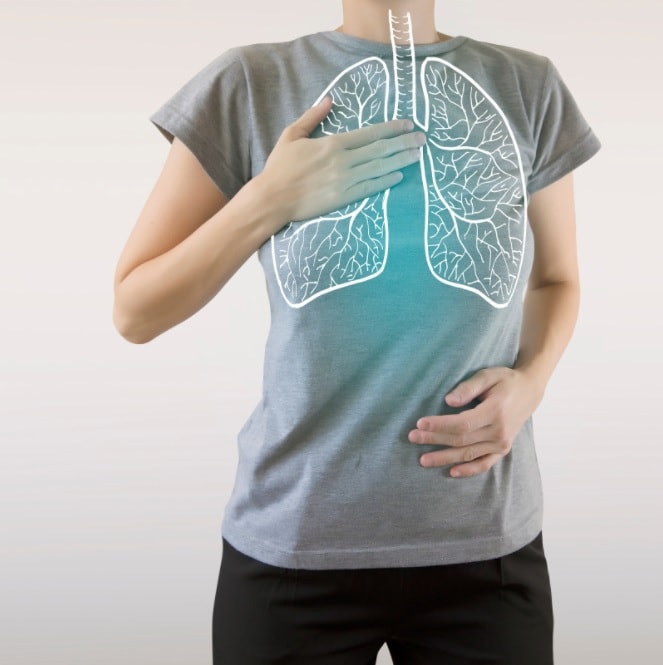What Is Seasonal Shortness of Breath?
September is an amazing month but with the changing of seasons comes a common respiratory ailment – seasonal shortness of breath.
With fall arriving, the weather is still warm and it’s nice to feel comfortable both inside and out. The promise of Halloween and Thanksgiving is just around the corner and winter is still enough away that we don’t have to worry about snow.
Kids are heading back to school which means a return to enclosed spaces like buses, classrooms, and locker rooms. These are the spaces where viruses love to circulate and use kids like Petri dishes.
We have ragweed and other allergens circulating in the air and doctor visits for children with asthma, wheezing, croup, and other respiratory illnesses begin to increase.
We, pediatricians, see it every year. Around three weeks into the school year kids and their parents are beating a path to our door with all forms of respiratory distress.
To make life simple doctors often shorten this illness to Seasonal ‘SOB’ (shortness of breath).
Seasonal Shortness of Breath and Respiratory Distress
Breathing difficulties can go from a minor annoyance to life-threatening in the blink of an eye. Here are a few pointers for parents to look out for.
Rapid Breathing
This is the number 1 thing most of us look for to determine respiratory distress. But what’s normal and what isn’t for kids depends on their age.
For example, babies breathe quite comfortably at a rate of 40 breaths per minute. A 15-year-old with a similar respiratory rate would be in significant distress.
So it is not just the rate of breathing we must also take the childs AGE into account to assess breathing rate.

Color Change
Color change is another sign that is brought up often. Obviously, someone turning blue or pale is not getting oxygen properly and may be quite sick.
But color change can be a late finding. So when I hear about this sign I get concerned over a couple of points.
- That the breathing problems have been going on for longer than anyone thought.
- The seasonal shortness of breath has progressed more rapidly than anyone realized.
Turning blue or even a persistent pale hue needs to be assessed immediately.
Subtle Signs of Seasonal Shortness of Breath
Subtle signs of respiratory distress are many and should be looked for early in any illness in kids.

- Nasal flaring is a sign that the body is working harder than normal to get oxygen into the lungs.
- Grunting occurs as the person exhales and is the body’s way of keeping air in the lungs to keep them open. We see this more commonly in babies with shortness of breath.
- Abdominal retractions are seen as the belly pulls in below the rib cage. Easy to spot in young children and babies it indicates the body working hard to get air into the lungs.
- Intercostal retractions occur when the muscles between the ribs pull inwards. You will see “hollows” between the rib bones and above the collarbone. It is due to reduced air pressure in the chest and may indicate a blocked airway.
5. Persistent noisy breathing can indicate a more serious problem. Wheezing is a whistling or musical sound made as air is forced through a narrowed airway. A bark-like cough may indicate swelling around the voice-box and be an indicator of croup.
Mental Status
Mental Status is another late and ominous finding. As respiratory distress progresses to respiratory failure an increase in confusion may occur.
Seasonal shortness of breath, especially over a long time, can lead to less oxygen getting to the brain.
Conclusion
Fall is upon us and seasonal shortness of breath can be a real problem for young children.
If your child has any of the above signs, our best advice is to stop and investigate. You know your child and what is normal for them so when something falls outside that seek a pediatrician’s advice.
That way you can be confident they’re as healthy as they can be this time of year. And you can enjoy that pumpkin spice latte in relative peace!
Read our article on boosting kids immunity for some great tips on kids health.
Dr. Christina Johns is a practicing pediatrician and Senior Medical Advisor for PM Pediatrics, the largest provider of pediatric urgent care services in the United States.
My name is Andrea Thompson and I’m a home based freelance writer. I’m 23 years old, married to my best friend, and mother to a wonderfully independent and opinionated 3 year old girl and step-mother to a sweet seven year old boy. I live in a tiny, little town in Kentucky, where I spend my free time fishing with my kids.
Writing has always been my passion, which I followed through high school, and for a while in college. Life happened, and once I discovered we were pregnant, I switched directions; opting for the healthcare industry because of the stability.
Finally, years later, I was in a place where I could leave the day job that never truly made me happy, and pursue my dreams. I’ve built, and am still building, my writing career from scratch. But, I’m passionate and I’m good at what I do. And, in the end, I can prove to my daughter that she can do anything she wants with this life.





